
Introduction
Handling vast datasets from APIs often presents challenges due to the sheer volume of information returned. Pagination is a critical technique in managing and retrieving data efficiently in such scenarios. This article delves into the significance of pagination within ServiceNow when dealing with extensive data from REST APIs.
Understanding Pagination
Pagination involves dividing large datasets into smaller, manageable parts or pages. Within REST APIs, this technique restricts the data returned per request by specifying a page size and offset. This method significantly eases data retrieval, enhances performance, and reduces the burden on both the API server and the client application.
Setting Up the Data Source
As an illustrative example, this article uses the PokeAPI, a well-known source for Pokémon-related data. To initiate the data source setup in ServiceNow, a few prerequisites are necessary:
- Accessing the ServiceNow Instance: Logging into the ServiceNow instance.
- Navigating to Data Sources: Locating and accessing the ‘Data Sources’ section within ServiceNow.
- Adding a New Data Source: Creating a dedicated data source tailored for the PokeAPI using the Data Stream (IntegrationHub) type. This setup includes assigning a source table and connection alias. The subsequent section details the process of creating a Data Stream.
Implementing Pagination
Managing pagination within the PokeAPI involves regulating the page size and offset values during API requests:
- Defining Page Size and Offset: Determining the ideal page size for efficient data retrieval and managing subsequent pages through offset adjustments.
- Constructing the REST API Call: Creating the necessary REST API call within ServiceNow, configuring parameters such as limit and offset for effective pagination.
- Handling Multi-page Responses: Implementing logic to retrieve subsequent pages of data and merging or processing them as required.
Demonstration with ServiceNow
The article proceeds to outline the practical steps of implementing pagination using the PokeAPI within the ServiceNow platform:
|
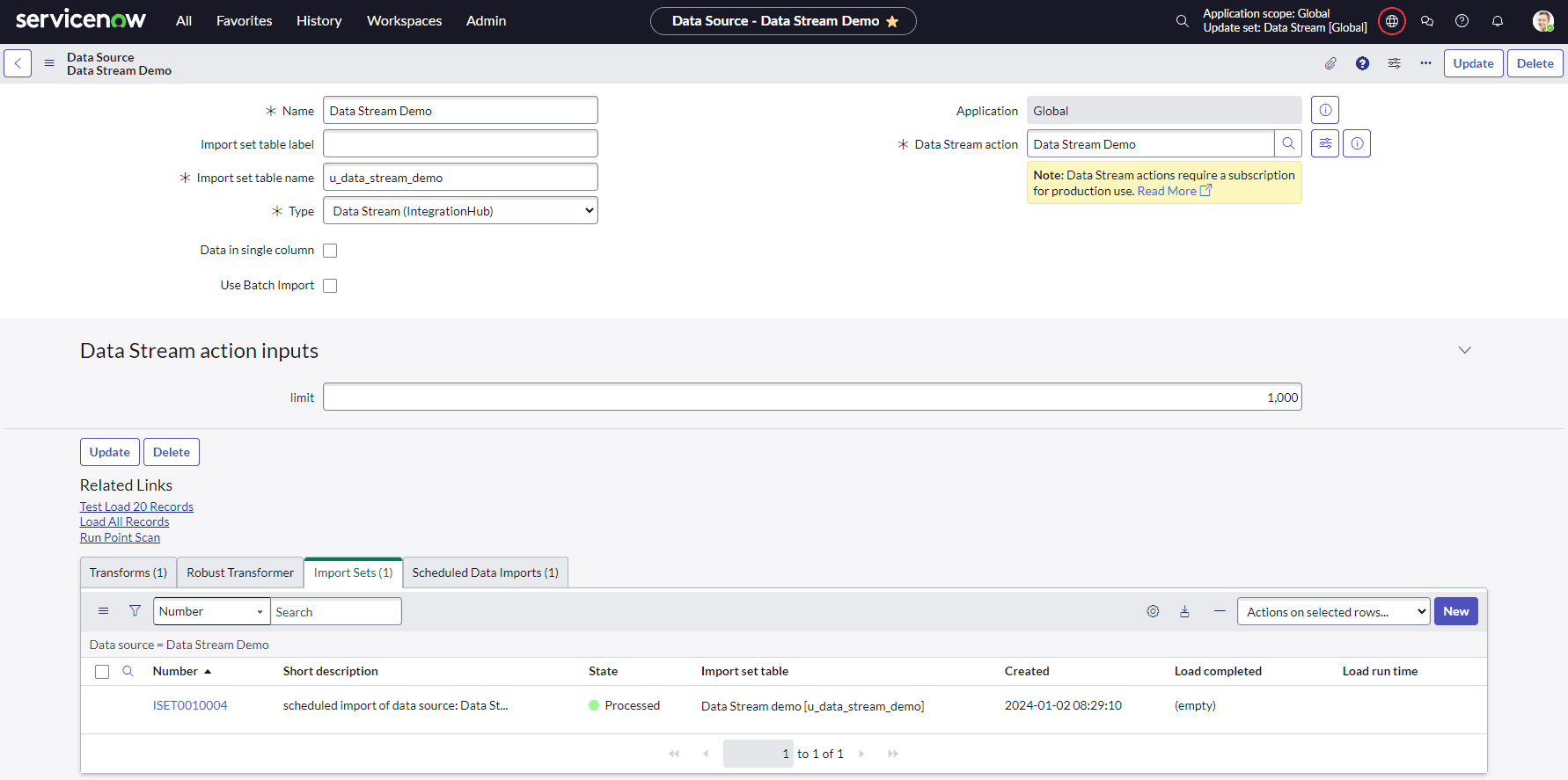 |
|
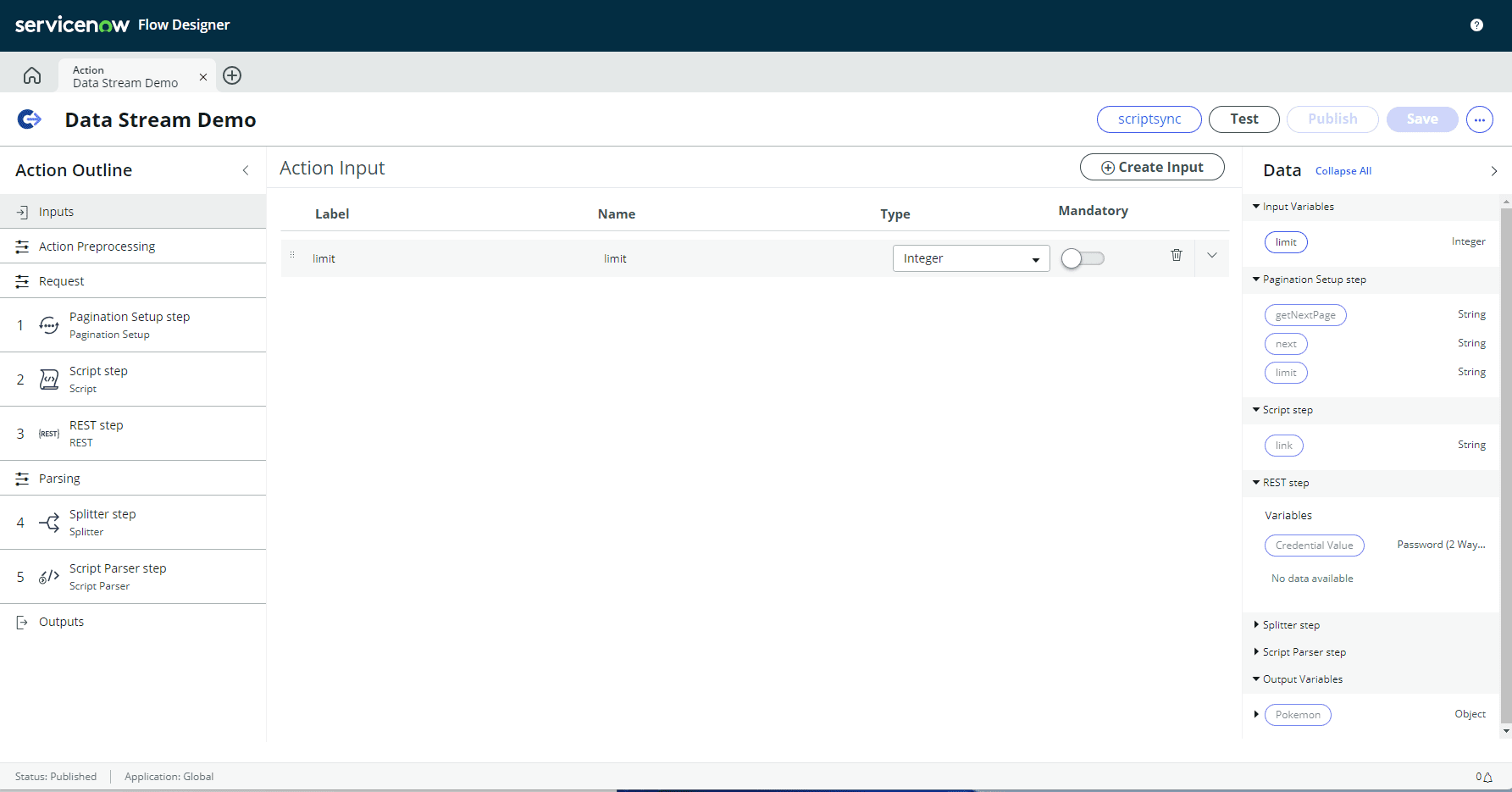 |
|
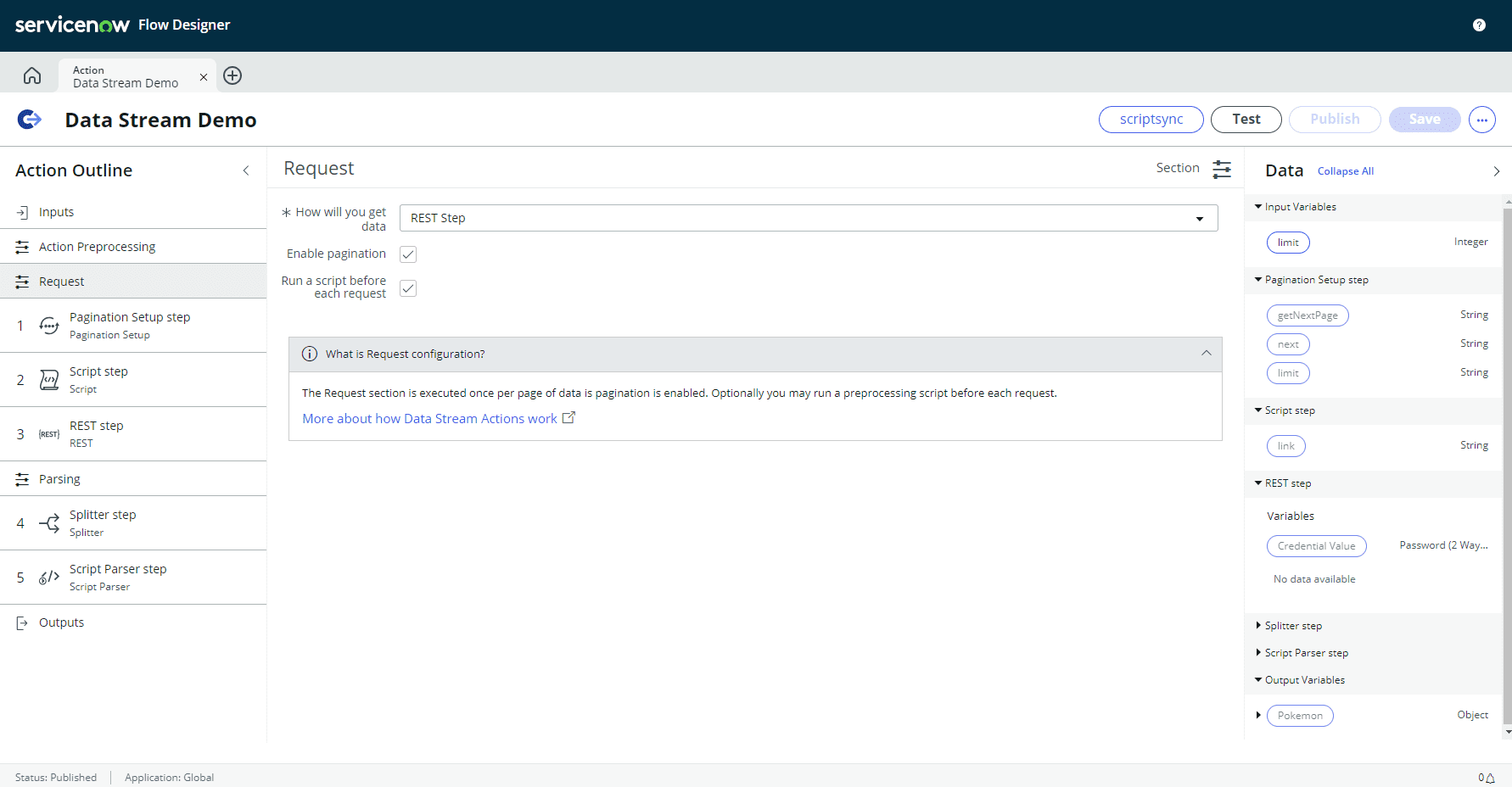 |
|
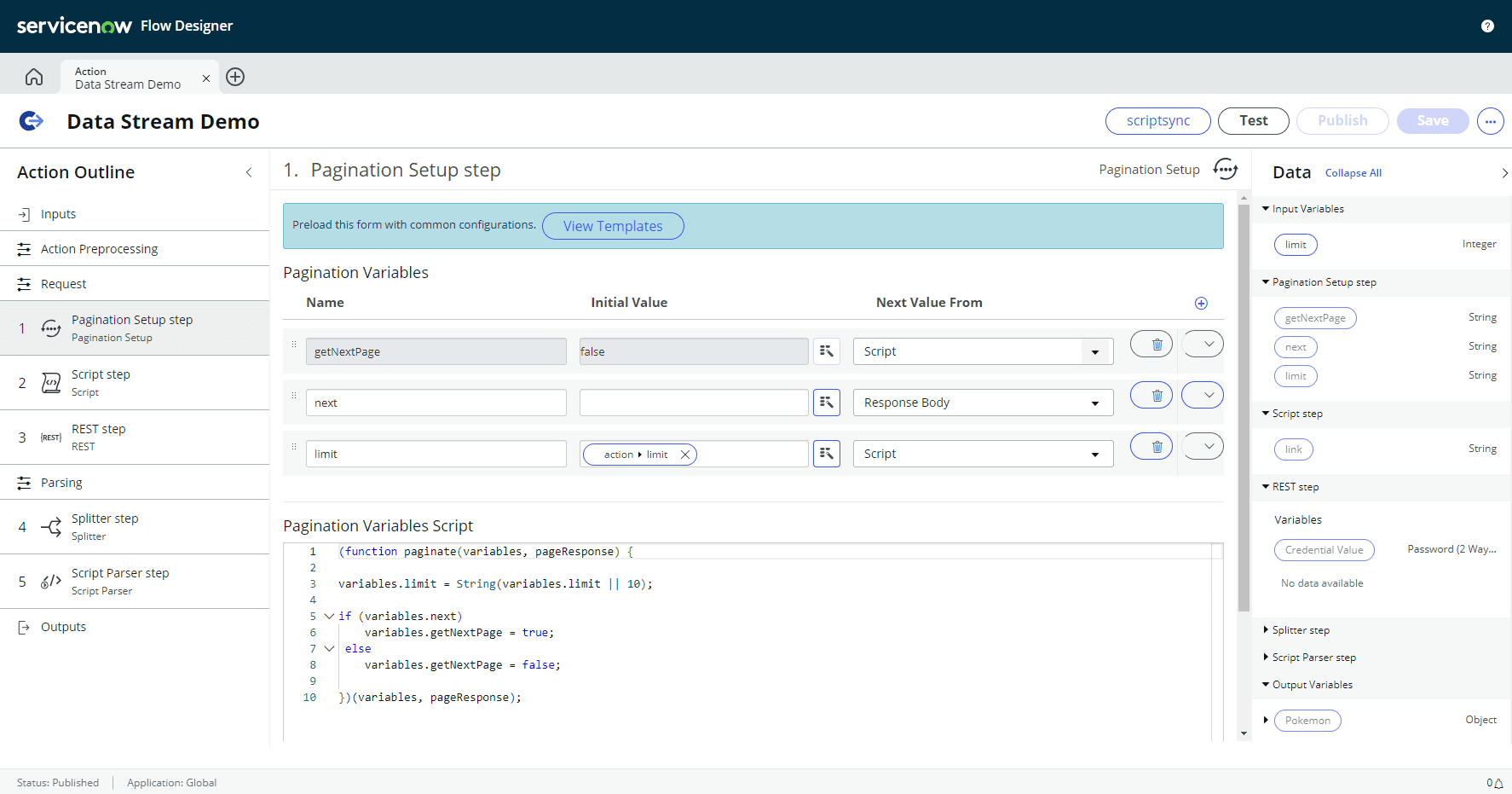 |
|
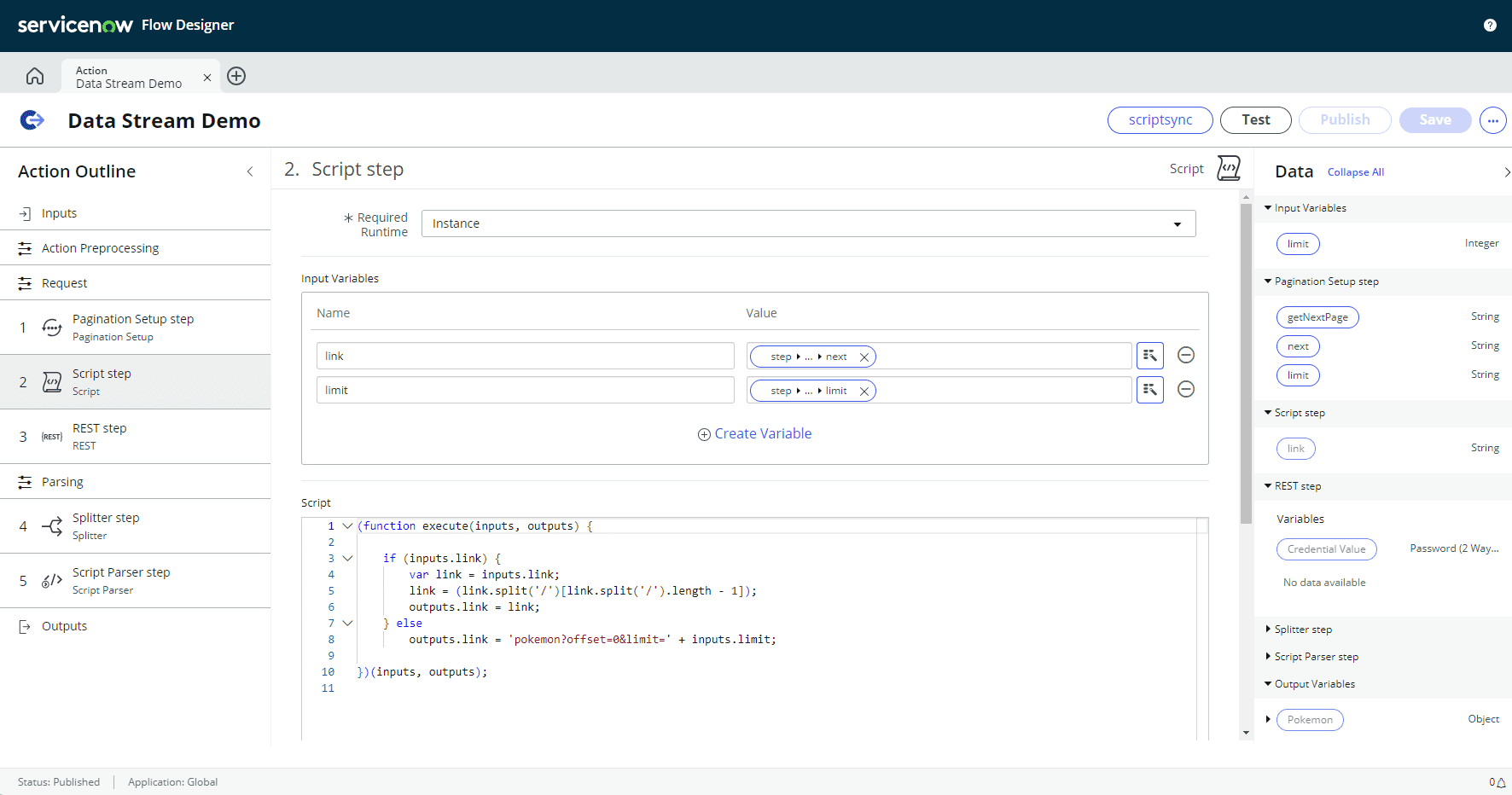 |
|
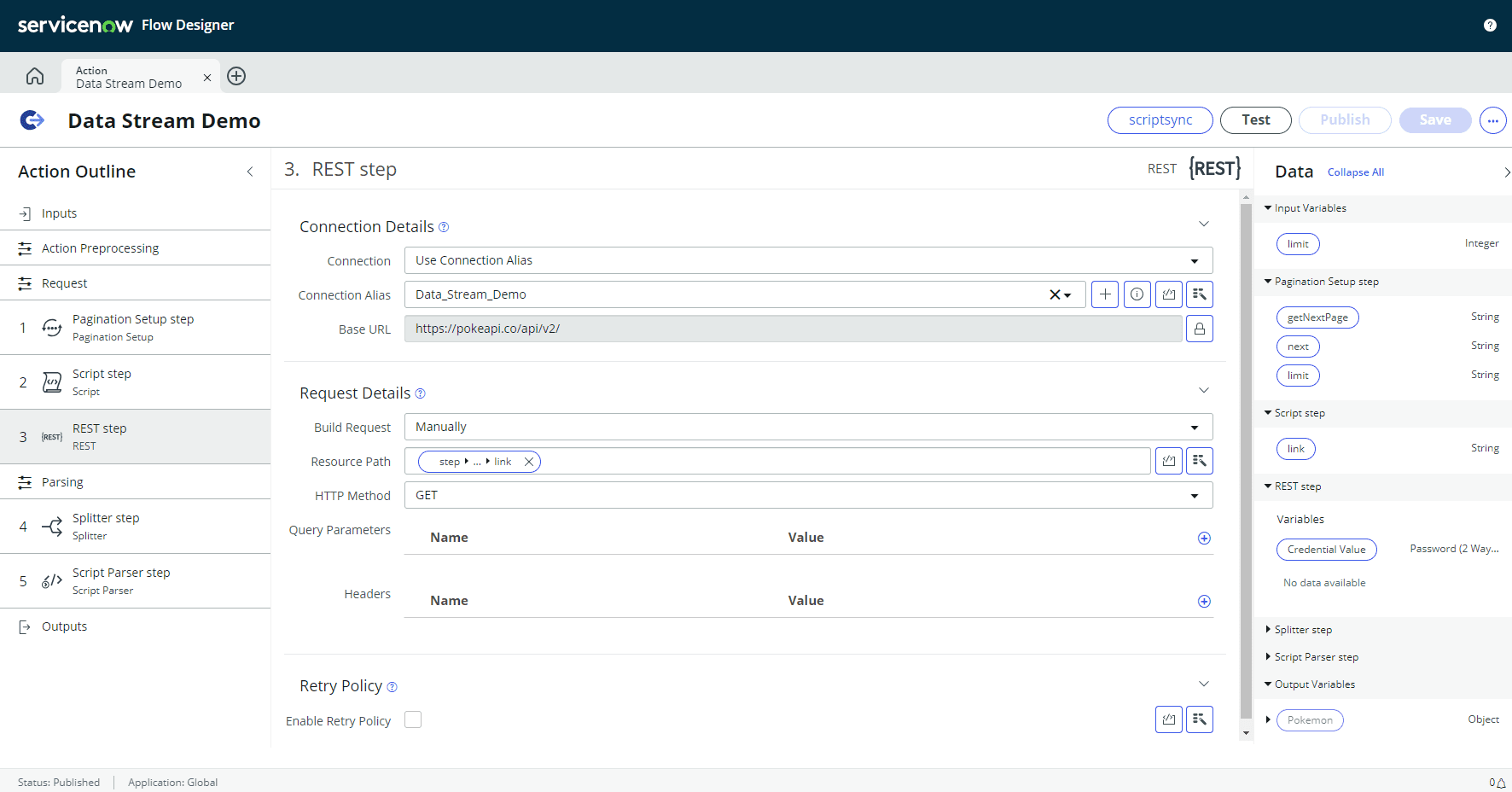 |
|
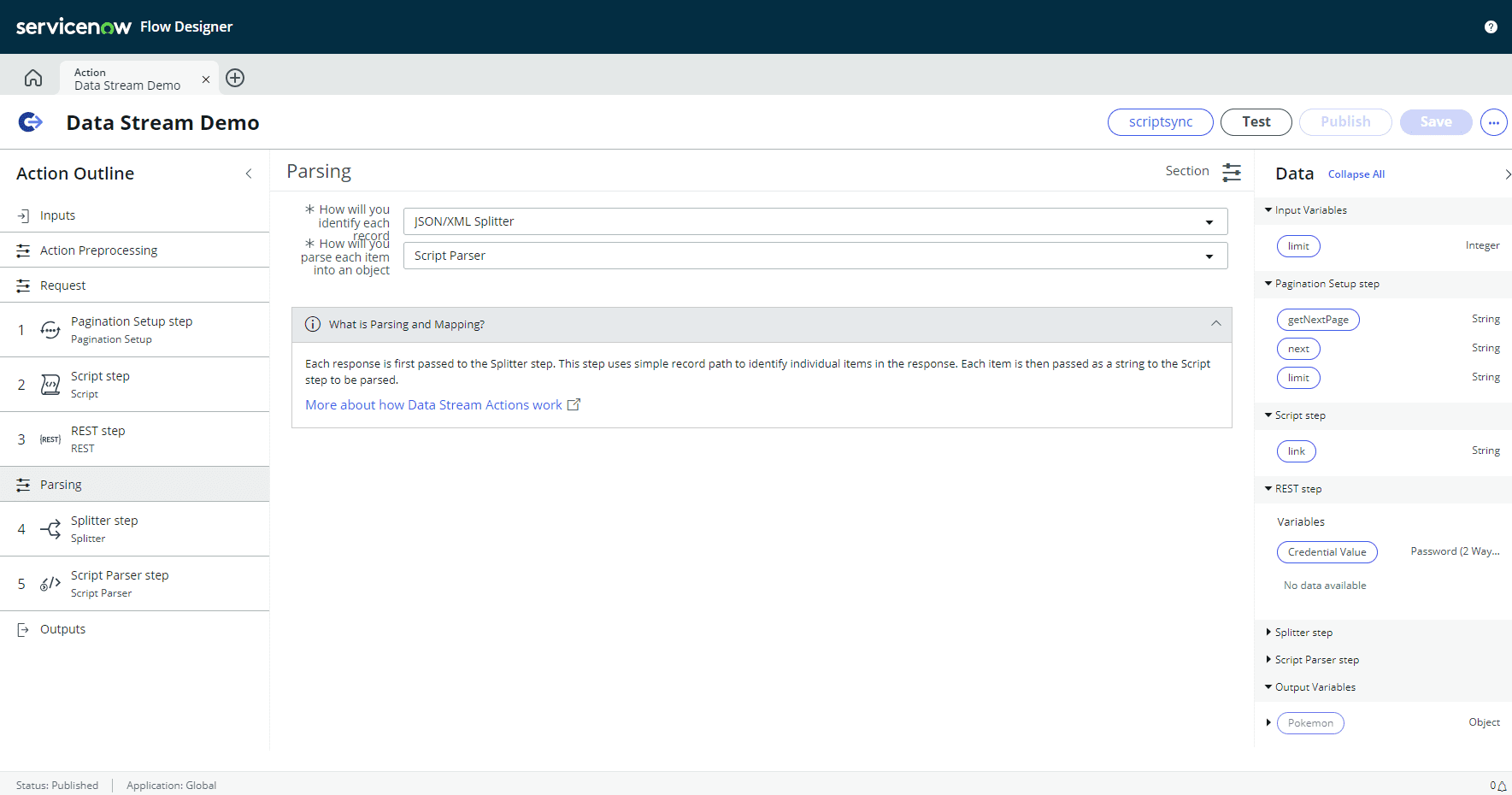 |
|
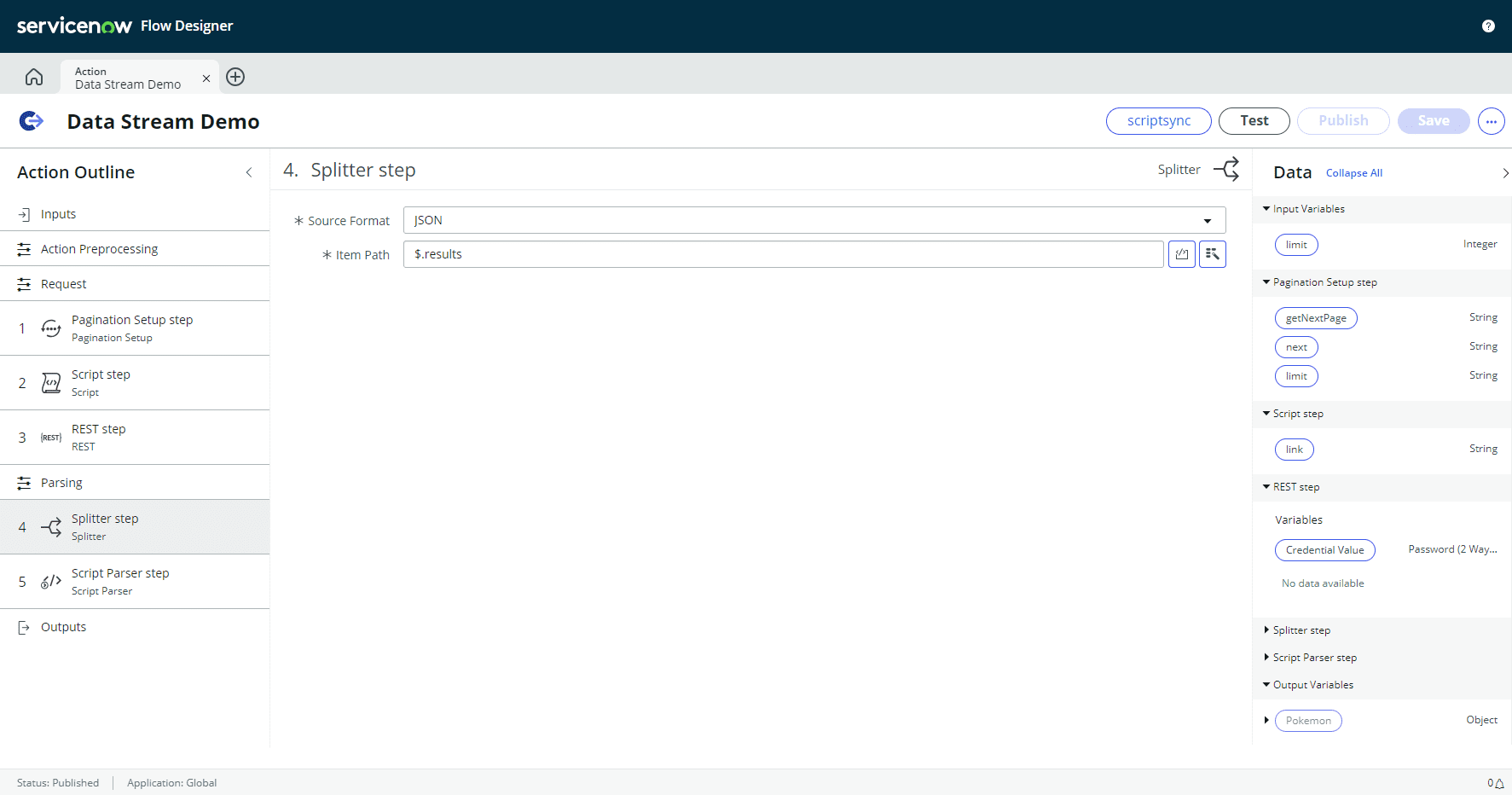 |
|
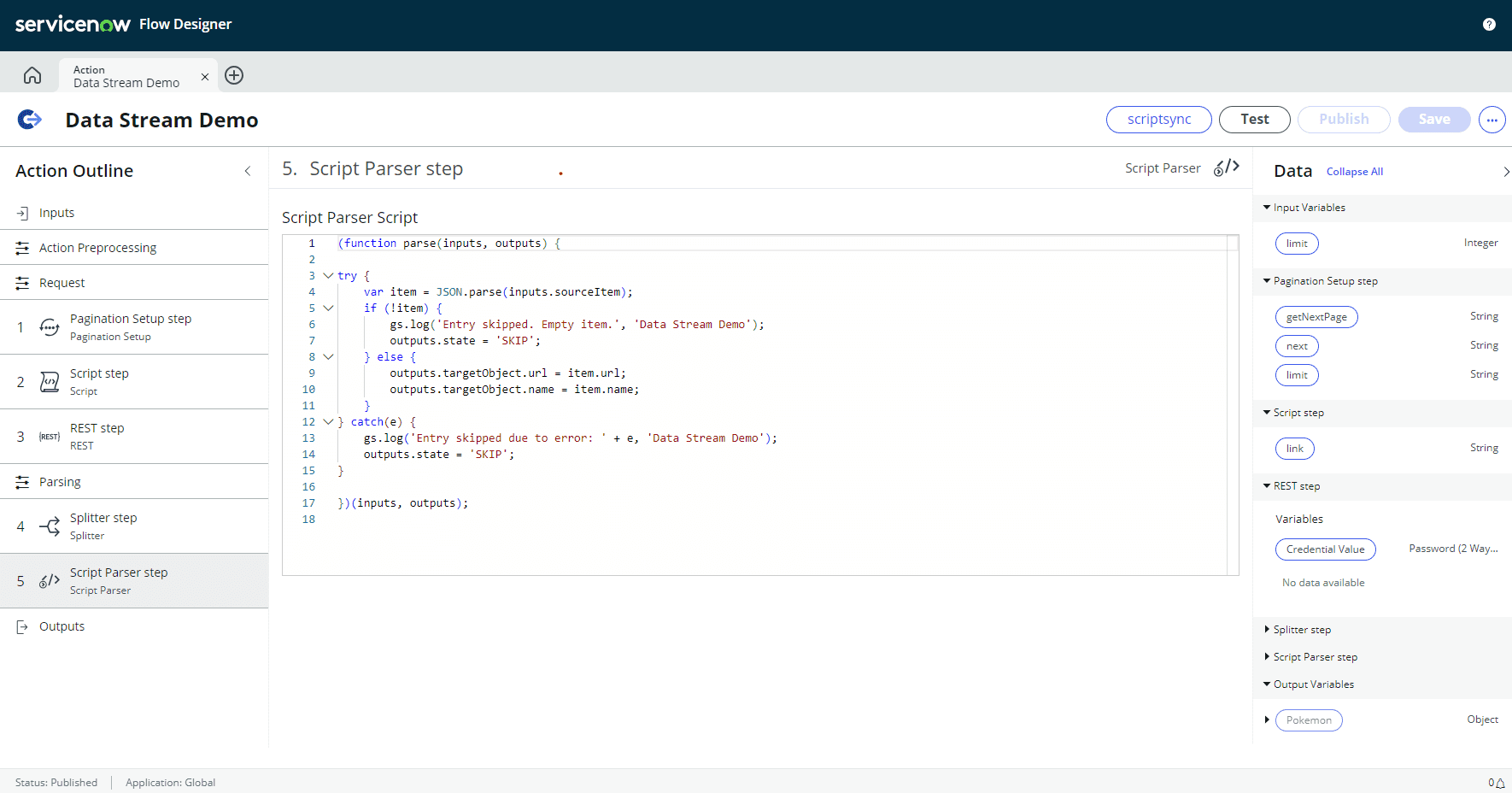 |
|
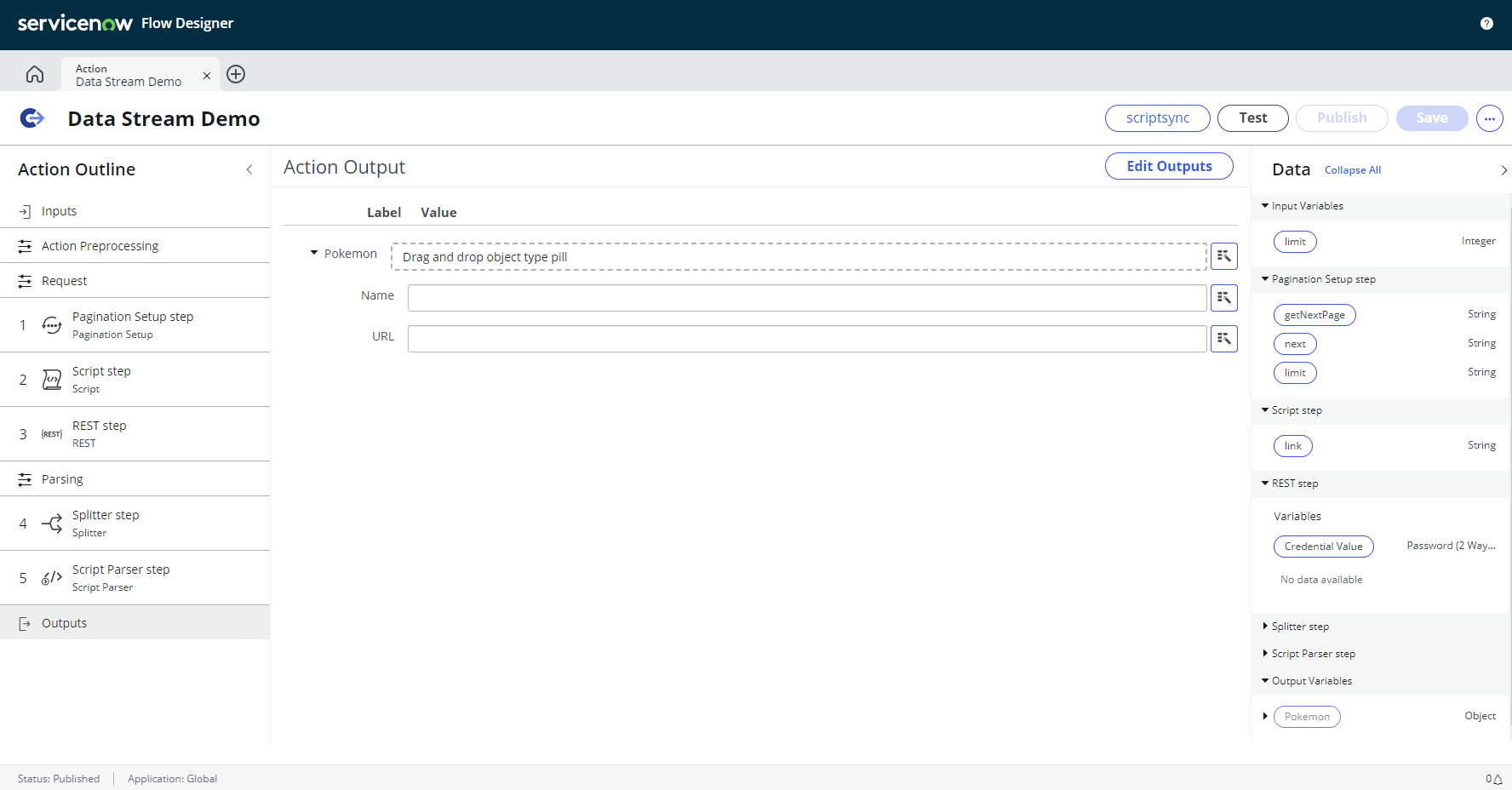 |
|
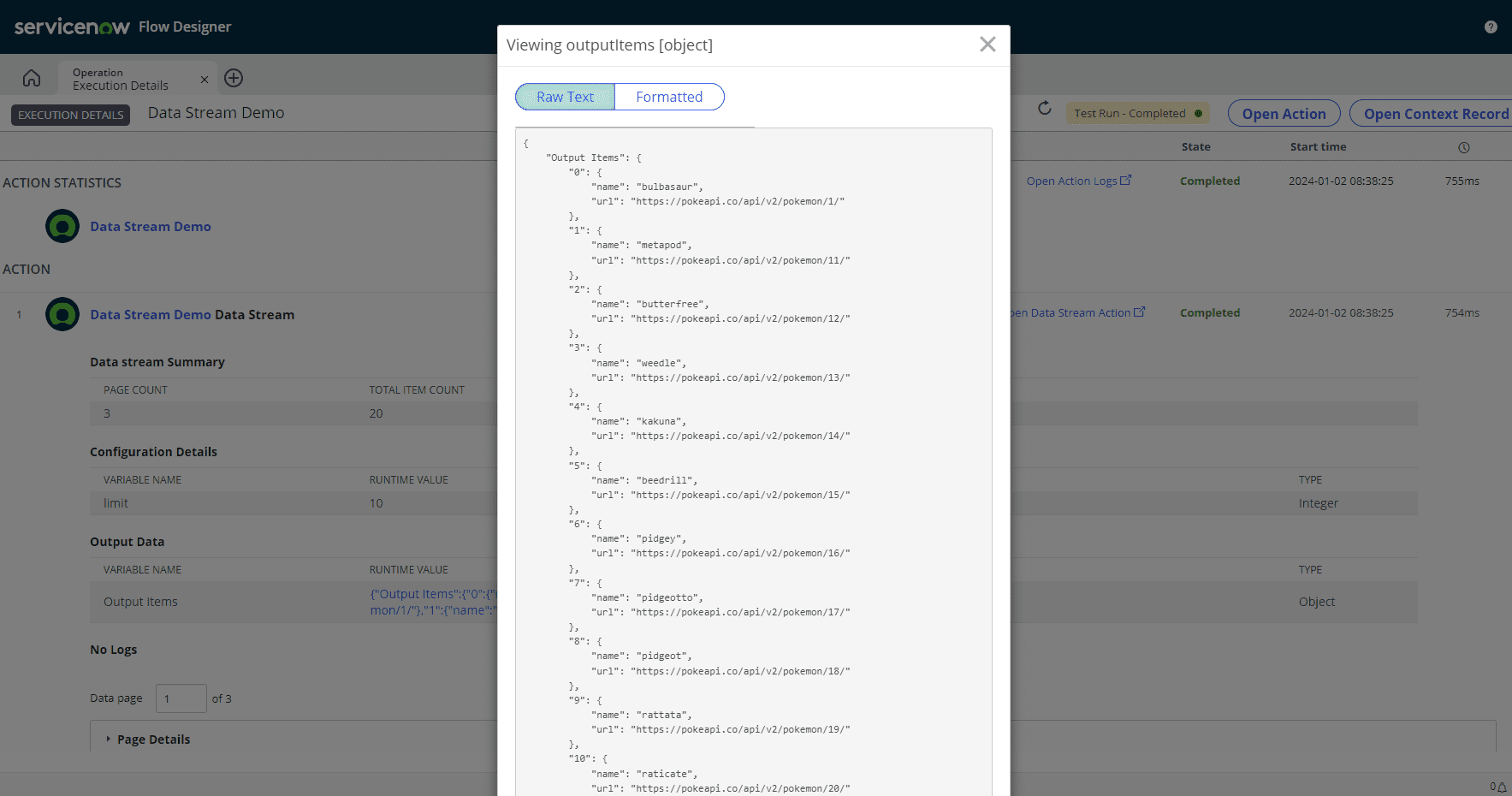 |
|
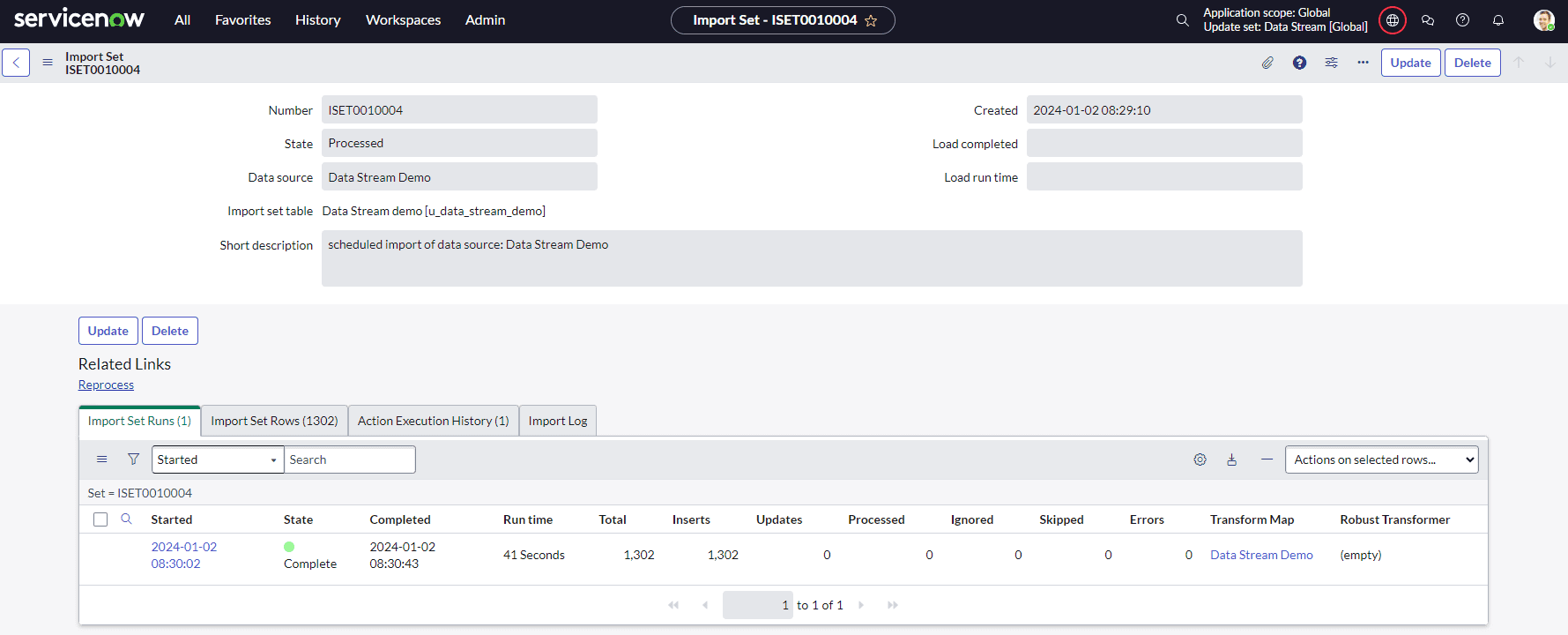 |
Conclusion
Pagination techniques, as exemplified using the PokeAPI within ServiceNow, are indispensable for efficiently managing extensive datasets. Embracing pagination methodologies empowers developers to optimize data retrieval, bolster application performance, and adeptly handle voluminous datasets within ServiceNow applications. Readers are encouraged to explore and implement these techniques independently.
